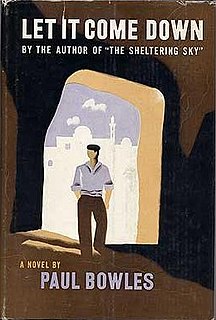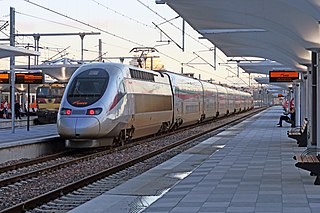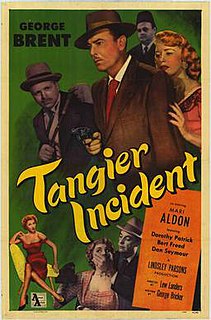

This is a list of administrators of the Tangier International Zone during the period when it was governed in accordance with the Tangier Protocol.


This is a list of administrators of the Tangier International Zone during the period when it was governed in accordance with the Tangier Protocol.
(Dates in italics indicate de facto continuation of office)
| Tenure | Incumbent | Country |
|---|---|---|
| 1912 | International Protectorate of Britain, France and Spain (later Portugal, Italy, Belgium, Netherlands, Sweden, and the United States) attached to French Morocco. | |
| 1923 | International Administration under the Tangier Protocol | |
| 1926 to 19 August 1929 | Paul Alberge , Administrator | |
| 19 August 1929 to 14 June 1940 | Pierre Le Fur , Administrator | |
| 14 June 1940 | Moroccan occupation under Spanish command | |
| 14 June 1940 to 1 August 1940 | Pierre Le Fur , Administrator | |
| 1 August 1940 to 4 November 1940 | Manuel Amieva Escandón , Administrator | |
| 14 June 1940 to 4 November 1940 | Antonio Yuste Segura , Military Governor | |
| 4 November 1940 | Incorporated into Spanish Morocco | |
| 4 November 1940 to March 1941 | Antonio Yuste Segura , Governor-General | |
| 1941 to 18 November 1942 | Genaro Uriarte Arriola , Governor-General | |
| 18 November 1942 to 11 October 1945 | Juan Potous y Martínez , Governor-General | |
| 11 October 1945 | Joint Administration of Great Britain, France and Spain, Portugal, Italy, Belgium, Netherlands, Sweden, United States and Soviet Union | |
| 11 October 1945 to 18 June 1948 | Luís Magalhães Correia , Administrator | |
| August 1948 to 9 April 1951 | Jonkheer H.F.L.K. van Vredenburch , Administrator | |
| 9 April 1951 to 21 June 1954 | José Luís Archer , Administrator | |
| 21 June 1954 to December 1954 | Étienne de Croÿ, prince de Croÿ-Roeulx , Administrator | |
| 4 January 1955 to 5 July 1956 | Robert van de Kerckhove d'Hallebast , Administrator | |
| 1923 to 16 March 1941 | Muhammad at-Tazi Bu Ashran , Representative of the Sultan and President of the Legislative Assembly (1st Term) | |
| 16 March 1941 to October 1945 | vacant | |
| October 1945 to 1954 | Muhammad at-Tazi Bu Ashran , Representative of the Sultan and President of the Legislative Assembly (2nd Term) | |
| 1954 to 8 July 1956 | Ahmad at-Tazi , Representative of the Sultan and President of the Legislative Assembly | |
| 8 July 1956 | Re-incorporated into Morocco | |

Tangier is a city in northwestern Morocco. It is on the Maghreb coast at the western entrance to the Strait of Gibraltar, where the Mediterranean Sea meets the Atlantic Ocean off Cape Spartel. The town is the capital of the Tanger-Tetouan-Al Hoceima region, as well as the Tangier-Assilah prefecture of Morocco.

The Spanish protectorate in Morocco was established on 27 November 1912 by a treaty between France and Spain that converted the Spanish sphere of influence in Morocco into a formal protectorate.

The British post offices in Morocco, also known as the "Morocco Agencies", were a system of post offices operated by Gibraltar and later the United Kingdom in Morocco.
An international zone is any area not fully subject to the border control policies of the state in which it is located. There are several types of international zones ranging from special economic zones and sterile zones at ports of entry exempt from customs rules to concessions over which administration is ceded to one or more foreign states. International zones may also maintain distinct visa policies from the rest of the surrounding state.
The Mandub Palace, formerly known as the Forbes Museum of Tangier, is a cultural monument and 10-acre (40,000 m2) property located on Mohammed Tazi Street in the Marshan neighborhood of Tangier, Morocco.

The postal history of Morocco is complex due to the country's political development in the 20th century. Mails were sent via post offices operated by the Sherifan post created by the Sultan, and by the European powers. After the partition of Morocco into French and Spanish protectorate and the international zone of Tangier in 1912, France and Spain established postal services in their respective zones.
The Tangier Protocol was an agreement signed between France, Spain and the United Kingdom by which the city of Tangier in Morocco became the Tangier International Zone.
Tangier is a city in Morocco.

Let It Come Down is Paul Bowles's second novel, first published in 1952.

In Morocco, the 75 second-level administrative subdivisions are 13 prefectures and 62 provinces. They are subdivisions of the 12 regions of Morocco. Each prefecture or province is subdivided into arrondissements, municipalities or urban municipalities in other urban areas, and districts in rural areas. The districts are subdivided into rural municipalities. One prefecture (Casablanca) is also subdivided into préfectures d'arrondissements, similar to districts (cercles) except they are grouping a few arrondissements instead of rural municipalities.
Tangier Exportation Free Zone is a free economic zone located south of Tangier, Morocco. The zone has an area of 3.45 km². It is managed by Tangier Free Zone (TFZ).

Al-Boraq is a 323-kilometre-long (201 mi) high-speed rail service between Casablanca and Tangier, operated by ONCF in Morocco. The first of its kind on the African continent, the high-speed service was inaugurated on 15 November 2018 by King Mohammed VI of Morocco following over a decade of planning and construction by Moroccan national railway company ONCF. It is the first phase of what is planned to eventually be a 1,500 kilometres (930 mi) high-speed rail network in Morocco. Al Boraq trains operate over a dedicated high speed line reaching speeds of up to 320 km/h on the 186 km sector between Tangier and Kenitra. From Kenitra trains operate over an upgraded mainline for the final 137 km through Morocco’s most populous corridor via Rabat to Casablanca.

Tangier's economy is the third biggest of all Moroccan cities, after the economic capital Casablanca and the city of Fez. Tangier is Morocco's second most important industrial center after Casablanca. The industrial sectors are diversified: textile, chemical, mechanical, metallurgical and naval. Currently, the city has four industrial parks of which two have the status of free economic zone.

The Tangier International Zone was a 373 km2 (144 sq mi) international zone centered on the city of Tangier, Morocco, then under French and Spanish protectorate, under the joint administration of France, Spain, and the United Kingdom, that existed from 1924 until its reintegration into independent Morocco in 1956.

Tangier Incident is a 1953 American thriller film directed by Lew Landers and starring George Brent, Mari Aldon and Dorothy Patrick. It was one of several Hollywood films set in Tangier during the International Zone period.
The following is a timeline of the history of the city of Tangier, Morocco.
American School of Tangier is an American international school in Tangier, Morocco, serving preschool through grade 12. In Morocco it is considered a non-profit organization, and AST is incorporated in the U.S. state of Delaware as a 501(c)(3) nonprofit. The American School of Tangier is accredited by the Middle States Association of Colleges and Schools.

Tanger-Tetouan-Al Hoceima is the northernmost of the twelve regions of Morocco. It covers an area of 15,090 km² and recorded a population of 3,556,729 in the 2014 Moroccan census. The capital of the region is Tangier.

During World War II, the Tangier International Zone was invaded and occupied by Francoist Spain. On 14 June 1940, days after the Italian declaration of war after the German invasion of France, Spain seized the opportunity and, amid the collapse of the French Third Republic, a contingent of 4,000 Moorish soldiers based in the Spanish Morocco occupied the Tangier International Zone, meeting no resistance. Despite the claim the occupation was a "provisional" measure, the operation was the realization of a long-standing wish as well as a prelude to a potential occupation of French Morocco that did not happen because Rabat ultimately rallied to the new Vichy regime. The mendub, the sultan's representative, was expelled in March 1941, further undermining the French influence in Tangier's affairs.
The Mendoubia or Mandubiyya refers to the former residence and office of the Mandub or Mendoub, the representative of the Sultan of Morocco in the Tangier International Zone from 1924 to 1956. It now houses the commercial court of Tangier. Its surrounding gardens are open to the public.